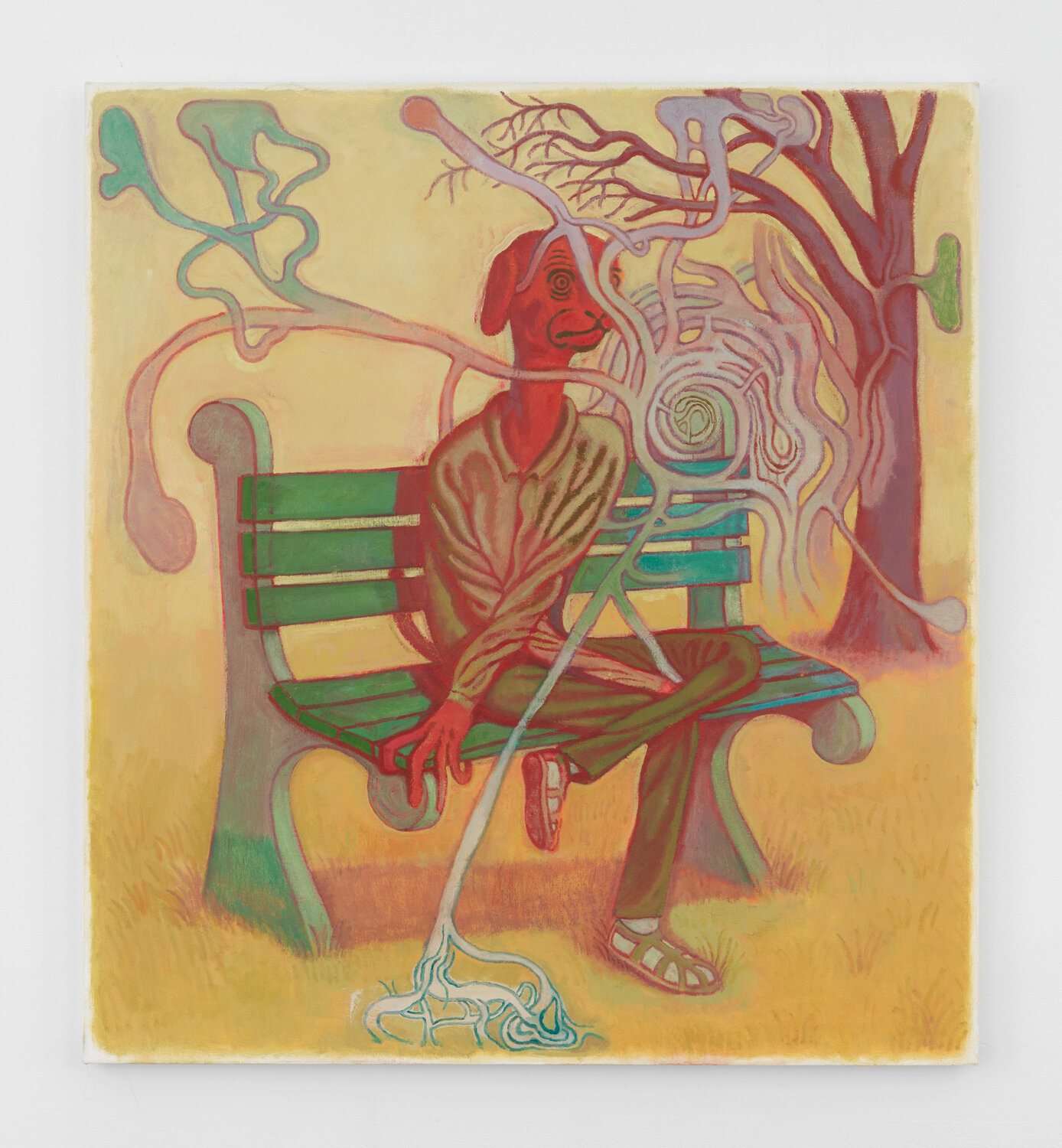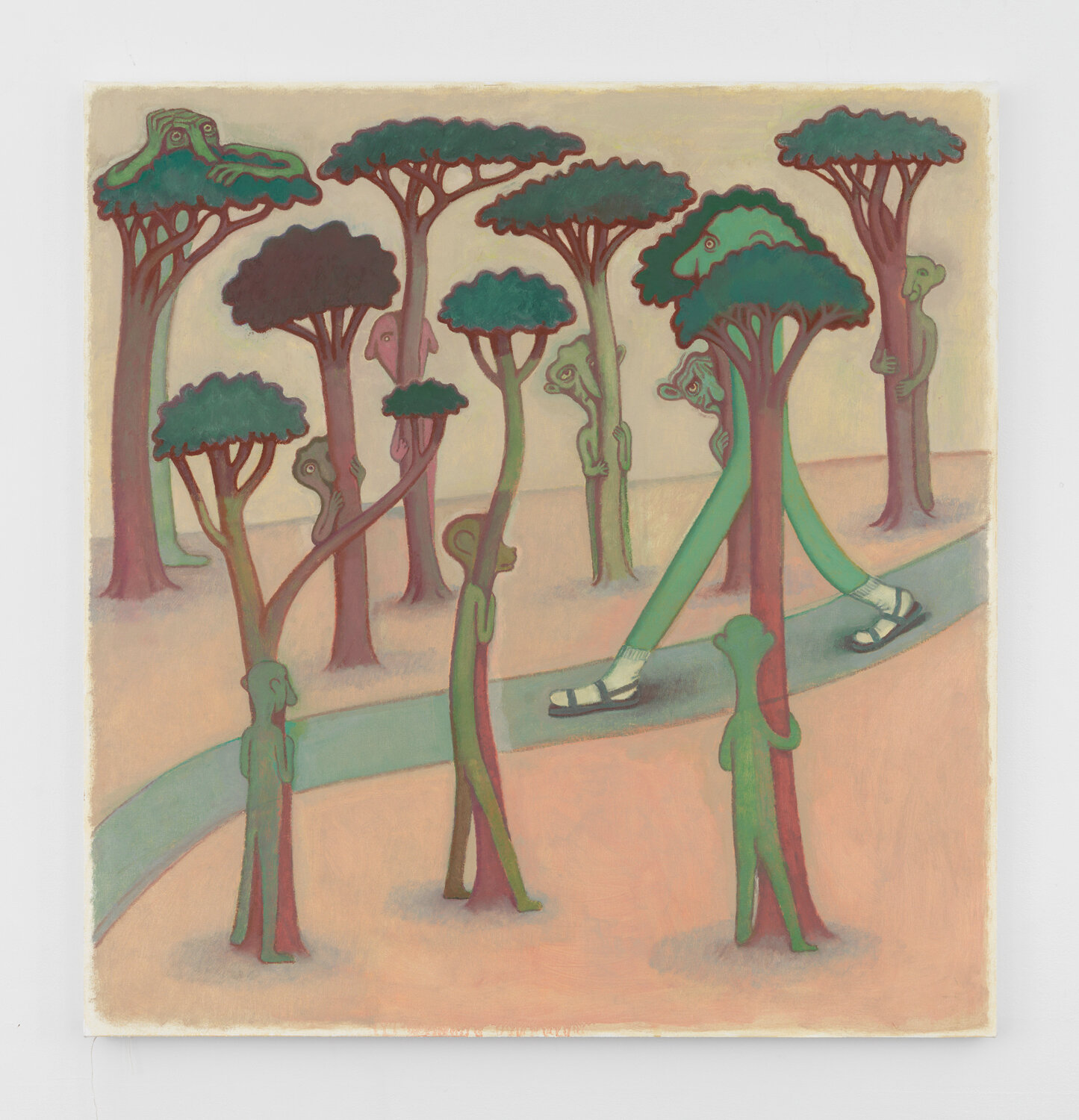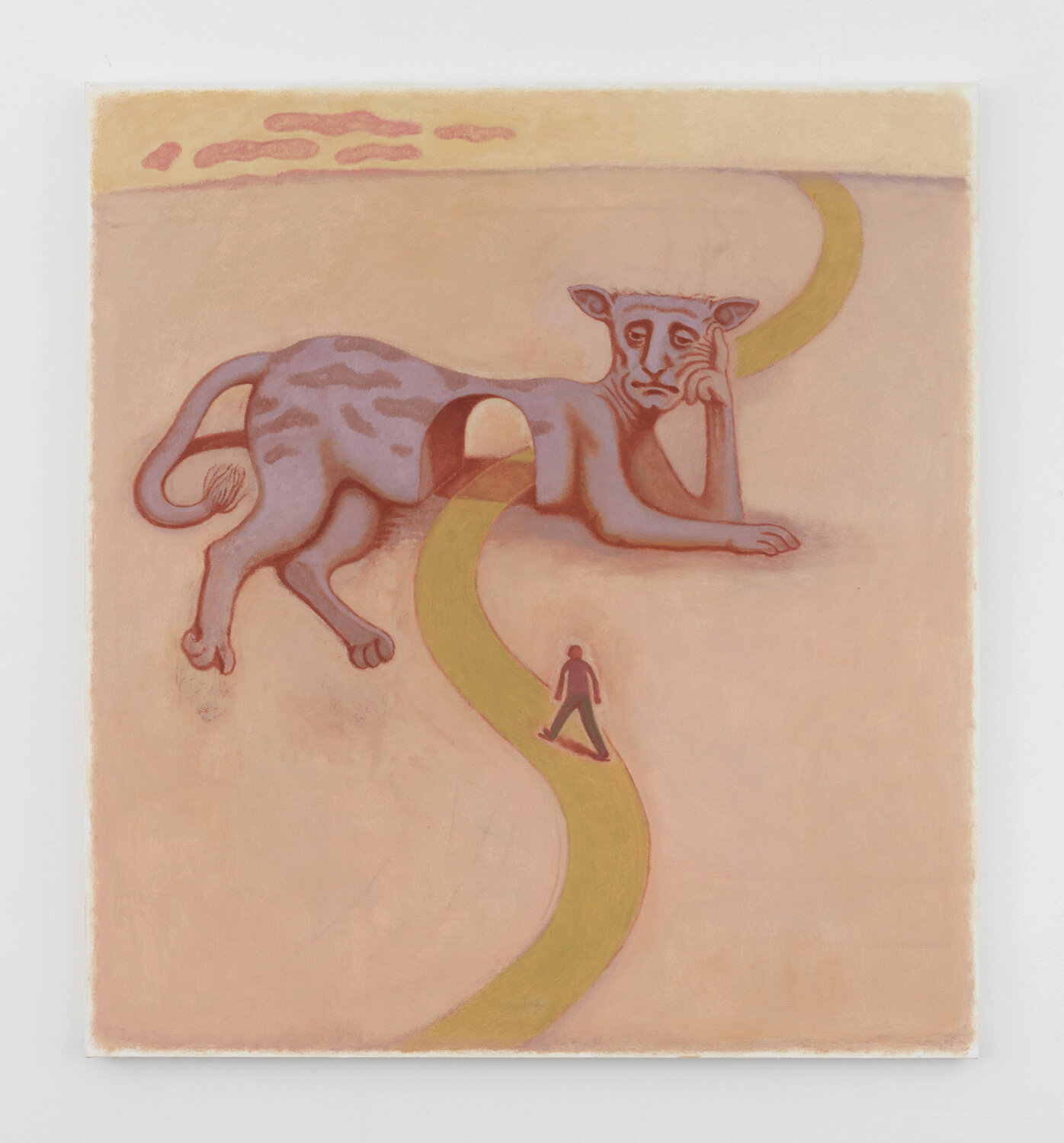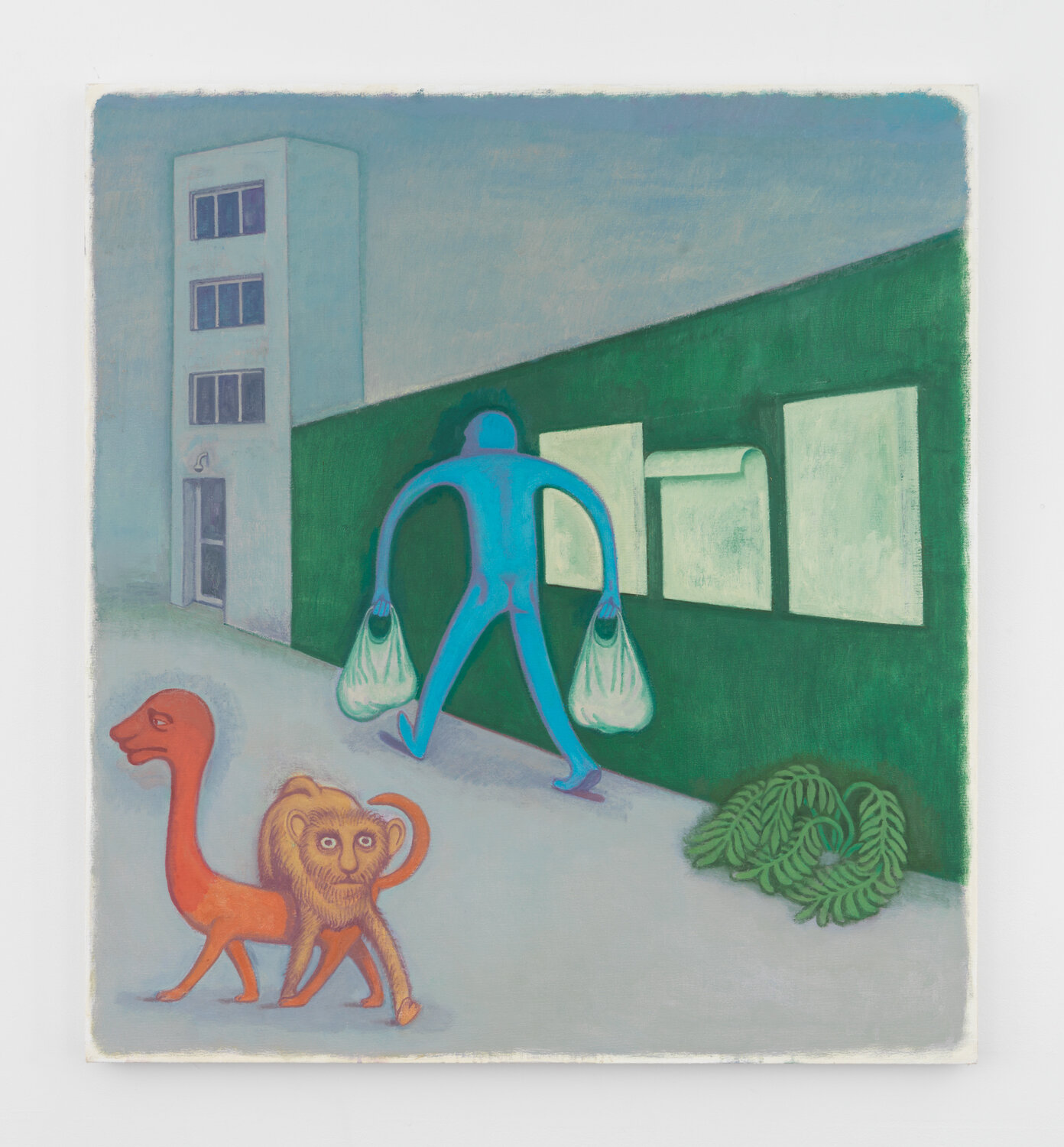Et quid amabo nisi quod ænigma est?[*]
[What shall I love if not the enigma?]
-Giorgio de Chirico
Clayton Schiff’s paintings seem like representations of dreams. The artist gathers impressions of an unconscious that distorts, displaces, enlarges, and compresses experiences accumulated while awake. His haunting iconography recalls the symbolism of Arnold Böcklin, the alienation and anxiety of Edvard Munch, and Leonora Carrington’s fairylands. Yet Schiff’s fantastical creatures and strange landscapes also have a subtlety and lightness that is playful and even humorous recalling Dr. Seuss.
Schiff’s first solo exhibition with 56 Henry speaks of isolation and disaffection, and champions the irrational and poetic, the enigmatic and arcane. The color palette is muted; soft tones prevail, adding to the work’s otherworldly quality. The paintings often feel empty and sparse, inviting comparisons to Giorgio de Chirico’s dystopian, alienating land and cityscapes.
Small World is on view through January 17 @ 56 Henry Street New York, NY 10002









